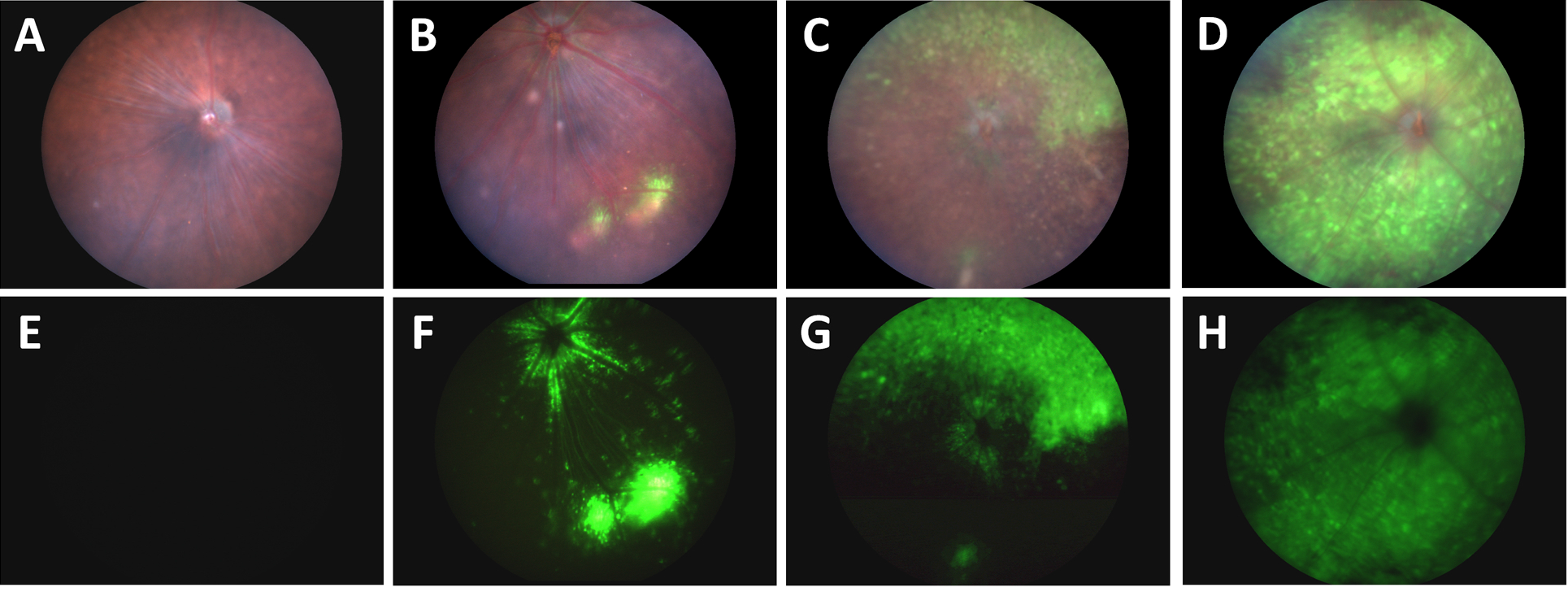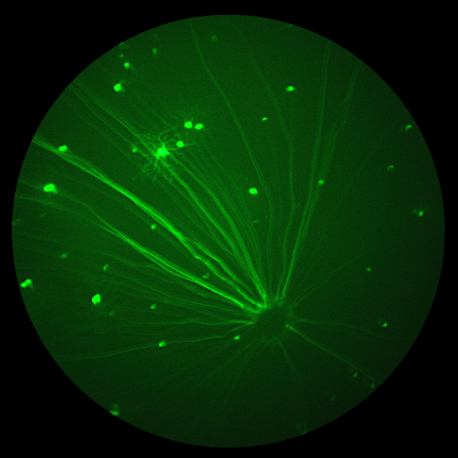Retinal vein occlusion is the second most common retinal vascular disorder leading to loss of vision in developed countries (after diabetic retinopathy). A lack of treatment options is partially caused by a lack of effective animal models; most rodent models do not show the essential symptom of cystoid edema and often heal quickly. In their […]
Phoenix MICRON Research Blog
27.01
2021
Stunning fundus images of GFP-positive cells demonstrate new intravitreal injection technique
In their article, “A Novel Method Combining Vitreous Aspiration and Intravitreal AAV2/8 Injection Results in Retina-Wide Transduction in Adult Mice,” Da Costa et al use the Phoenix MICRON® III imaging platform to take stunning images demonstrating the success of their novel intravitreal injection technique. Gene therapy is a promising treatment option of genetic retinopathies—adeno-associated viruses […]
18.11
2020
The Phoenix MICRON® IV system and OCT help evaluate promising compounds for treatment of age-related macular degeneration
Age-related macular degeneration affects tens of millions of people worldwide, leading to vision impairment and blindness. Anti-VEGF treatment helps only 25-40% of patients, leaving others with no recourse to this progressive blinding disease. In their article, “Suppression of aberrant choroidal neovascularization through activation of the aryl hydrocarbon receptor,” Choudhary et al explore potential treatment using […]
28.10
2020
A year-long longitudinal pattern dystrophy fundus study with the Phoenix MICRON® IV imaging platform
In their 2019 paper, “Novel molecular mechanisms for Prph2‐associated pattern dystrophy,” Chakraborty et al use the Phoenix MICRON® IV retinal imaging platform to longitudinally study the effect of a very specific mutation affecting the Peripherin 2 protein. Peripherin 2 is a protein in rods and cones which, if mutated, can lead to retinitis pigmentosa, cone-rod […]
29.09
2020
RPE mutations lead to retinal hypopigmentation, vasculature changes, and decreased function
In their paper, “The microphthalmia-associated transcription factor (Mitf) gene and its role in regulating eye function,” García-Llorca et al use the Phoenix MICRON® IV to examine the outer eye appearance, retinal pigmentation, and retinal vasculature through fluorescein angiography to study several different mouse mutants. Combined with electroretinography and histology, the fundus images tell a story […]
26.08
2020
Phoenix MICRON® III shows microglia-like cells migrating from the optic nerve after injury
Microglia respond to neurological injury but the precise way they help to clear and remodel the injuries is not known. In their paper, “Optic nerve as a source of activated retinal microglia post-injury,” Heuss et al investigate a population of microglia-like cells that proliferate in the retina after an optic nerve injury. They identify GFPhi myeloid […]





